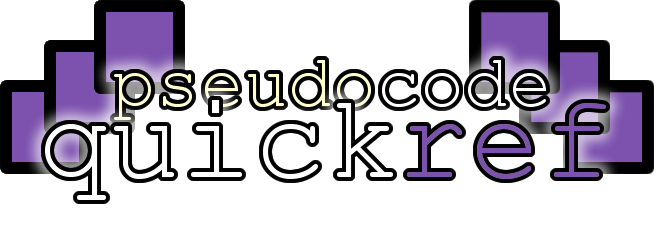

This resource is designed as a quick reference or revision guide. It has not been endorsed by any exam boards. If you spot any mistakes, please let me know and I'll fix them asap.
This website aims to give a quick reference for VB.NET, Python and C# and pseudocode and is aimed primarily at teachers & students working towards a GCSE or A Level in Computer Science
VB.NET, Python and C# are programming languages designed to be understood and followed by computers. Pseudocode is not a programming language: it's written to be understood by humans so that they can turn it into any programming language.
Each skill has example code in Python, C#. You can also enable VB.NET and Pseudocode for OCR GCSE if you'd find that useful.
If you know what you're looking for, use the search bar above the categories list.
A for loop is a count-controlled loop which means it your code says exactly how many times the loop should repeat.
A for loop will use a variable to count between the minimum and maximum value. This variable is called the index, which is why for loops often use the variable i.
A for loop is an example of definite iteration because the number of times the loop repeats is clearly defined.
This example will count from 10 to 20
A for loop is a count-controlled loop which means it your code says exactly how many times the loop should repeat.
A for loop will use a variable to count between the minimum and maximum value. This variable is called the index, which is why for loops often use the variable i.
Rather than increasing the index by 1 each time, you can step up by any amount until you reach the maximum.
This example will count down from 10 to 1 then say "Blast off!"
A for each loop means the code in the loop will run once for each item in an array.
This means it is a count-controlled loop because the number of times the loop will run is not dependent on a condition being met: you know how many times it will repeat in advance.
A for each loop is an example of definite iteration because the number of times the loop repeats is clearly defined.
This example will display the lyrics for "The wheels on the ... go round and round" for an array containing the strings "bus", "car" and "tram"
Loading...